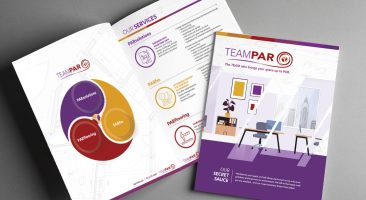What are the Most Readable Fonts for Web Design?

Why Consider Readability When Choosing Fonts?
You likely encounter dozens, if not hundreds, of different fonts in your daily life—on everything from your phone and computer screen to the signs you see while driving. And while you probably don’t spend too much time thinking about them, you certainly would notice if they were illegible.
Font choices can make or break the ability of your audience to receive your intended message—not only in terms of what you are saying, but also how you want to say it. It has the power to impact the user experience and how others perceive your brand. Moreover, by using fonts that are not accessible to all, including those with disabilities, you risk alienating potential customers and violating ADA compliance standards.
Key Factors for Selecting Readable Web Fonts
Here are some factors to consider when identifying the most readable fonts for your web projects:
- Serifs: A font is characterized as a “serif” when it includes the small strokes or embellishments that create “feet” on the letters, or “sans serif” when it does not (like the font of this article). Sans serif fonts are among the most readable fonts for web design, while serif fonts add elegance or personality to the visual elements of your site. Using a combination of the two can offer an appealing overall visual experience for your audience.
- Size: Size can have a significant impact on how readable the fonts are on your website. More ornate font selections may require a larger size, while simple sans serifs are the safest choice for copy that must remain small.
- Spacing: This refers to how close the individual characters are to each other in a given font, including both horizontally (kerning) and vertically (leading). Both the kerning and leading should be set so that there is a comfortable amount of breathing room between characters, but not so much that it makes it difficult to follow along from word to word or line to line.
So, What is the Most Readable Font?
There is no one “most readable font.” It largely depends on the context of use and the specific audience needs. Effective font selection merges clear legibility with aesthetic suitability, ensuring that the text is not only easy to read but also visually succinct with the overall design of the website. With so many options to choose from, finding the best web fonts for readability can seem daunting—so we compiled a list of some of the greatest hits.
15 of the Most Readable Fonts for Your Designs:
- Arial: A classic industry standard known for its availability and legibility, this go-to for graphic designers is perfect for headlines, logos, and body text.
- Futura: With a crisp and modern appearance, this classic geometric sans-serif typeface works well on websites and other digital mediums for headlines and mid-size body copy.
- Georgia: Best for low-resolution screens, this classy serif font translates well to any device and is widely used for headlines and main text.
- Helvetica: Renowned for its popularity and digital readability, this clear and crisp font is versatile enough for any text type.
- Karla: This clean, lively, and evenly spaced font is ideal for informal texts, such as lifestyle blogs or social media posts.
- Lato: A unique font characterized by its sleek and serious yet warm appearance, Lato is commonly used for both headings and body text.
- Merriweather:With ample space between characters, this charming font works well for headlines, body text, and long-form content.
- Montserrat: Offering a fresh, urban look that adds personality without sacrificing readability, Montserrat works well with both headlines and body text.
- Open Sans:Given its name for the “open” space between characters, Open Sans is clean, simple, and pairs nicely with more bold or ornate fonts. This popular font is perfect for a professional, minimalist-looking website.
- PT Sans: This contemporary font pairs well with PT Serif to create a duo of the most readable web fonts available.
- Quicksand: Known for its quirky personality, Quicksand reads well on mobile devices and works nicely as body text.
- Roboto: Designed specifically for digital interfaces and small text sizes, this somewhat new font has gained popularity for its modern and elegant, yet approachable, look.
- Rooney: With its warm, playful appearance and soft, welcoming tone, this engaging font stands out in large headlines and remains clear and legible in smaller text sizes.
- Tisa: Relatively new and gaining in popularity among designers, this contemporary-looking font is highly legible, making it ideal for long passages of text and small screens.
- Verdana: Designed specifically for computer screens, Verdana boasts an easy-to-read look, making it ideal for technical text.
Choosing the Perfect Font for Your Project
There is no one-size-fits-all when it comes to selecting “the right” fonts. It is a subjective decision that involves a series of considerations. Here are some best practices:
- Align it with your brand identity: Choose fonts that reflect your brand’s personality (e.g., serif fonts for a more professional tone or rounded sans-serifs for a warmer, friendlier vibe).
- Consider your audience: Different age groups and demographics have distinct preferences. Younger audiences might lean towards trendy fonts, while older groups may prioritize readability.
- Test across devices: Ensure your fonts are legible and appealing on various devices, from mobile phones to desktops. This step is crucial for maintaining a consistent user experience.
- Mix with purpose: Combine fonts carefully to maintain harmony. Pair bold headers with simpler body text to balance visual interest and readability.
Paradigm Can Help You Create a User-Friendly Website
Whether you need help creating visually captivating graphic designs, strategic marketing support, or even guidance on how to incorporate AI into your marketing programs and processes, Paradigm can help. Offering a comprehensive suite of marketing support and services customized to your needs, we’ll work with you to achieve your growth goals and maintain a competitive edge in a dynamic business environment.

















 Phone:
Phone: